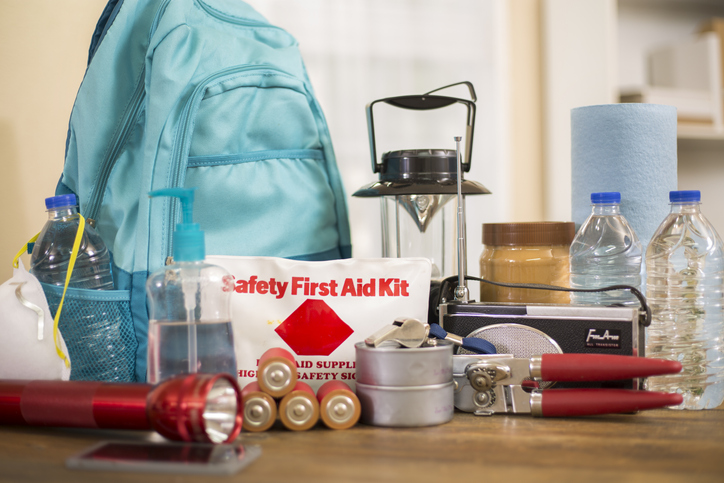Living in South Florida, we all know that sooner or later we will be impacted by a hurricane. Being prepared can help minimize the impact of a storm. Nicklaus Children’s Hospital and SafeKids Miami-Dade would like to remind you that keeping safety in mind both before and after the storm has passed is essential.
Stay informed and make sure you observe hurricane watches and warning as these will give you and your family a timeline and allow for best planning. Follow evacuation orders if issued, as often first responders cannot perform rescues during the storm due to the weather itself, and keep in mind that access to your location may be blocked by hazards caused by the storm in the aftermath.
In Preparation for the Storm
- Create a plan and calmly share the plan with your family members and make sure everyone knows their role. Older kids can help and participating will give them a sense of control over what can be a scary situation for all.
- Your plan should include an evacuation route including any special needs that a family member may have. Not all shelters have the capability to accept pets, make a plan for them as well. Please see https://www.ready.gov/plan for more information.
- Make an emergency kit for your family, to include any medications, first aid supplies and toiletries should you need to evacuate. Keep it handy but out of reach of children to prevent poisoning.
- Apart from you Hurricane Preparedness Supplies (i.e. bottled water, non-perishables etc.) Please see https://www.weather.gov/wrn/hurricane-supplies, make a shelter in place station preferably in a center-most room/ area in your house away from windows or doors. Include a radio and flashlights. Ensure all cell phones are fully charged.
- Use shutters or plywood to protected windows from shattering during the hurricane.
- Anticipate safety needs such as window guards to prevent small children from falling out of windows since you may have to rely on natural air flow for ventilation.
- Bring all outdoor decoration and items that may become projectiles inside and secure all others.
After the Storm
- Take a moment to reassure your children and remind them that although the storm has passed, they still have to do their part to stay safe. Include examples as they may not be aware of hazards.
- Assess the damage only when given the all clear by local authorities and if your home has suffered severe damage contact a building inspector to assess the structural safety of your home.
- Drinking water may be compromised… or use bottled water or follow boil water instructions always using the back burners of stoves or grill.
- Do not walk or allow children into puddles or bodies of water to prevent electrocution from damaged power lines. Be aware that local wildlife may have been brought into residential areas via winds and flooding.
- Replace pool fences and safety barriers immediately after the storm and secure access to prefilled bathtubs and water containers. Empty if water sources are not compromised.
- If using a generator make sure you use it outdoors and 20 feet away from all windows, doors and vents including your neighbor’s to prevent carbon monoxide poisoning. Use carbon monoxide detectors to make sure safe usage as winds might shift.

- Use flashlight instead of candles or open flames for lighting needs. If candles must be used make sure to place them where children cannot reach them or pull them down.
- Keep cleaning products and chemicals away from children to prevent accidental ingestion of products as well as chemical burns. Ventilate areas while cleaning.
- If opening doors and windows use child gates and window guards to keep children from harm. Do not place cribs near 2nd story windows. Screens are meant to keep bugs but can be easily be popped off by a child.
- Know where the children are at all times.
- Children may not have the ability to comprehend the event and its aftermath; avoid retraumatization by limiting storm media coverage to the essential information needed to stay informed.
- Knowing how to weather the storm is an important life lesson and knowing how to do so safely can save a life.
For more information and additional safety tips for your family, please visit www.safekids.org.